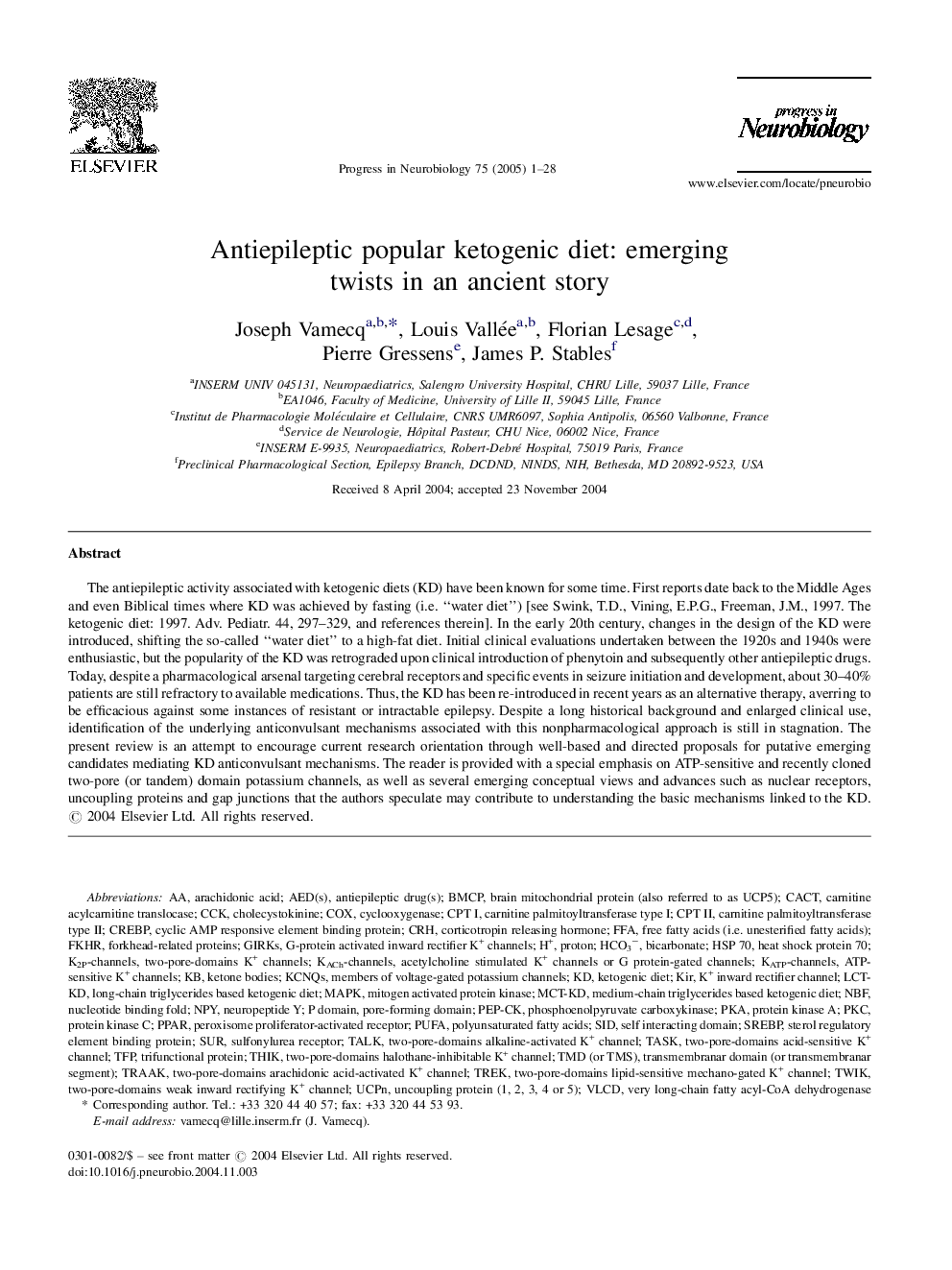| Article ID | Journal | Published Year | Pages | File Type |
|---|---|---|---|---|
| 9435119 | Progress in Neurobiology | 2005 | 28 Pages |
Abstract
The antiepileptic activity associated with ketogenic diets (KD) have been known for some time. First reports date back to the Middle Ages and even Biblical times where KD was achieved by fasting (i.e. “water diet”) [see Swink, T.D., Vining, E.P.G., Freeman, J.M., 1997. The ketogenic diet: 1997. Adv. Pediatr. 44, 297-329, and references therein]. In the early 20th century, changes in the design of the KD were introduced, shifting the so-called “water diet” to a high-fat diet. Initial clinical evaluations undertaken between the 1920s and 1940s were enthusiastic, but the popularity of the KD was retrograded upon clinical introduction of phenytoin and subsequently other antiepileptic drugs. Today, despite a pharmacological arsenal targeting cerebral receptors and specific events in seizure initiation and development, about 30-40% patients are still refractory to available medications. Thus, the KD has been re-introduced in recent years as an alternative therapy, averring to be efficacious against some instances of resistant or intractable epilepsy. Despite a long historical background and enlarged clinical use, identification of the underlying anticonvulsant mechanisms associated with this nonpharmacological approach is still in stagnation. The present review is an attempt to encourage current research orientation through well-based and directed proposals for putative emerging candidates mediating KD anticonvulsant mechanisms. The reader is provided with a special emphasis on ATP-sensitive and recently cloned two-pore (or tandem) domain potassium channels, as well as several emerging conceptual views and advances such as nuclear receptors, uncoupling proteins and gap junctions that the authors speculate may contribute to understanding the basic mechanisms linked to the KD.
Keywords
P domainTWIKVLCDCREBPSREBPCPT IHSP 70TFPTREKNBFcACTFKHRKirPKCTRAAKTHIKpKaCCKCRHCPT IIPPARNPYCOXFFAHCO3−MAPKcyclooxygenaseArachidonic acidPolyunsaturated fatty acidsPUFAKetone bodiessurBicarbonateKetogenic dietSiDtalkphosphoenolpyruvate carboxykinasenucleotide binding foldcorticotropin releasing hormoneTasksterol regulatory element binding proteincyclic AMP responsive element binding proteinTrifunctional proteinheat shock protein 70protein kinase AProtein kinase Cmitogen activated protein kinaseProtonATP-sensitive K+ channelssulfonylurea receptorperoxisome proliferator-activated receptorNeuropeptide Y
Related Topics
Life Sciences
Neuroscience
Neuroscience (General)
Authors
Joseph Vamecq, Louis Vallée, Florian Lesage, Pierre Gressens, James P. Stables,
